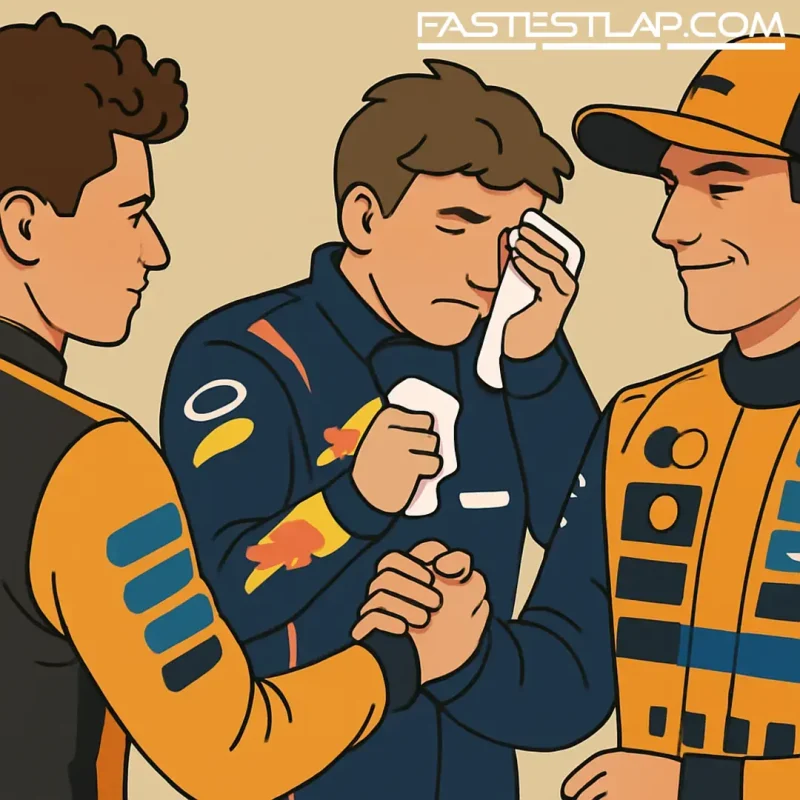Monza has a way of telling the truth. Strip the wings off, let the engines breathe, and see who’s brought the most efficient racing car to the party. On Sunday, it was Red Bull.
Max Verstappen ended McLaren’s five-race streak at the Italian Grand Prix with a performance that was both bold in setup and brutal in execution, pulling 19.2 seconds clear of Lando Norris to take his first win since Imola in May. Oscar Piastri completed the podium in third, but the mood in papaya afterwards was reflective rather than triumphant.
Andrea Stella didn’t hide from it. McLaren showed up to the Temple of Speed expecting a fight, not a drubbing. What they got, he suggested, was a reminder that under low-drag, skinny-wing conditions, the Red Bull RB21 retains something McLaren’s MCL39 doesn’t yet deliver: aerodynamic efficiency that holds up when the downforce comes off.
“We weren’t anticipating domination, but we also didn’t expect that gap,” Stella admitted. In plain English: McLaren knew Monza would compress the field; they didn’t expect to be outgunned like this.
The race hinged on Verstappen’s conviction. He pushed for an ultra-trimmed rear wing configuration through qualifying, even as some inside the garage reportedly fancied a different direction. It paid immediately: pole by 0.077s over Norris. The lingering question was Sunday — would the trimmed car hold its head in the race or chew up its tyres and leave Max exposed?
Turn 1 gave us a hint. Verstappen kept the lead by skating across the first chicane and then, in the spirit of avoiding penalty calls, ceded position to Norris soon after. But instead of McLaren disappearing — as we’ve seen them do on conventional tracks — Verstappen sat in the tow, then swept back past. From there, he just built and built. The RB21, edgy at times in the braking zones, was devastating where it counts at Monza: on the straights and through the fast changes of direction with minimal drag.
For McLaren, the sting isn’t just the result; it’s the profile of the defeat. Over one lap, Red Bull had one or two tenths. Over a stint, more than that. At these downforce levels, the difference wasn’t a setup tweak or a pit wall decision; it smelled like a concept gap. Stella hinted as much, noting Red Bull’s recurring strength whenever the rear wing gets small. McLaren’s car, he suggested, is optimised in a different window — and this trend, he pointed out, echoes what they saw last year too.
That’s an uncomfortable truth for a team that’s been the class of the field for weeks. It also happens to be exactly the sort of clarity you want heading into the final phase of a title run: a precise weakness to fix, not a vague sense of “off weekend.” Monza is extreme, yes. But low-drag tracks aren’t going away, and neither is Red Bull’s know‑how in this territory.
None of this undoes the good McLaren brought to Italy. Norris kept his head, managed the car, and banked second. Piastri was tidy and quick enough to lock out the podium. The team’s operational level remains high, which has been a hallmark of their 2025 campaign. But they also know championships are won in the margins where you’re least comfortable, and on Sunday they found one of theirs.
As for Verstappen, this was the sort of win that shifts momentum as much as it scores points. He took a risk on setup, backed his feel, and made it look inevitable. There haven’t been many days this year when Red Bull have been able to say the same. Monza was their sweet spot — fewer compromises, fewer corners, maximum reward.
The interesting part now is what McLaren do with the lesson. Stella all but said it: the car’s “fundamental” traits need to stretch to cover the skinny-wing spectrum. That’s as much a wind‑tunnel and CFD job as it is a race‑weekend tweak, but it’s solvable, and McLaren haven’t exactly been slow at iterating.
Monza often distorts the championship picture because it’s so unlike everywhere else. This one doesn’t feel like distortion. It feels like a reliable datapoint. In the slipstream and on the stopwatch, Red Bull’s RB21 was simply a better low-drag machine. McLaren left with a 2–3 and a clear to‑do list.
Different paths, same conclusion: to win the long game in 2025, you need to be quick everywhere. Red Bull just reminded everyone what “everywhere” looks like when the wings come off. McLaren heard it loud and clear.




